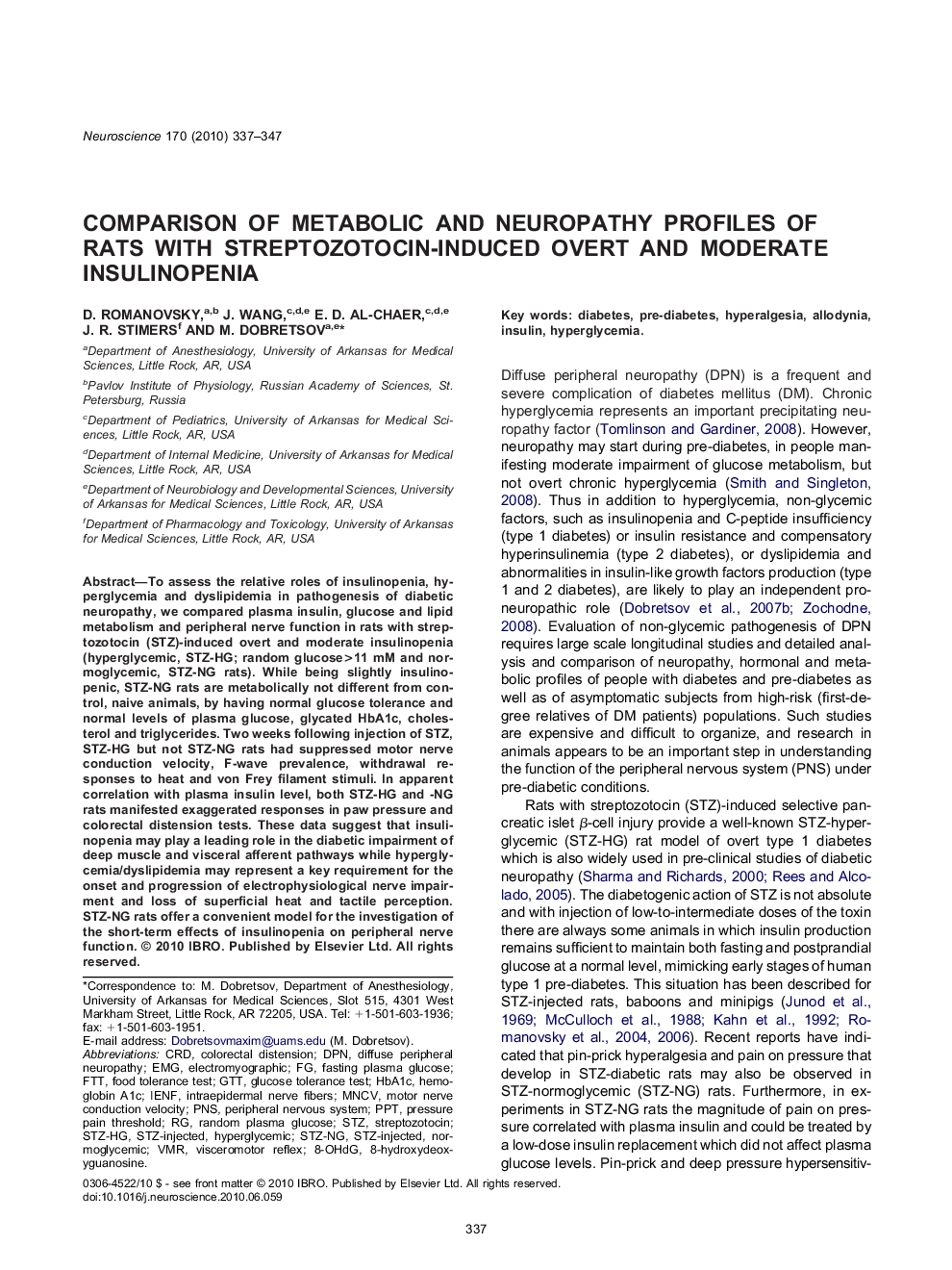| Article ID | Journal | Published Year | Pages | File Type |
|---|---|---|---|---|
| 6277253 | Neuroscience | 2010 | 11 Pages |
Abstract
To assess the relative roles of insulinopenia, hyperglycemia and dyslipidemia in pathogenesis of diabetic neuropathy, we compared plasma insulin, glucose and lipid metabolism and peripheral nerve function in rats with streptozotocin (STZ)-induced overt and moderate insulinopenia (hyperglycemic, STZ-HG; random glucose>11 mM and normoglycemic, STZ-NG rats). While being slightly insulinopenic, STZ-NG rats are metabolically not different from control, naive animals, by having normal glucose tolerance and normal levels of plasma glucose, glycated HbA1c, cholesterol and triglycerides. Two weeks following injection of STZ, STZ-HG but not STZ-NG rats had suppressed motor nerve conduction velocity, F-wave prevalence, withdrawal responses to heat and von Frey filament stimuli. In apparent correlation with plasma insulin level, both STZ-HG and -NG rats manifested exaggerated responses in paw pressure and colorectal distension tests. These data suggest that insulinopenia may play a leading role in the diabetic impairment of deep muscle and visceral afferent pathways while hyperglycemia/dyslipidemia may represent a key requirement for the onset and progression of electrophysiological nerve impairment and loss of superficial heat and tactile perception. STZ-NG rats offer a convenient model for the investigation of the short-term effects of insulinopenia on peripheral nerve function.
Keywords
VMRPPTVisceromotor reflexGTTIENF8-OHdGMNCVCRDFTTHbA1cDPNSTZ8-hydroxydeoxyguanosineAllodyniacolorectal distensionstreptozotocinelectromyographicEMGIntraepidermal nerve fibersinsulinDiabetesglucose tolerance testmotor nerve conduction velocityperipheral nervous systempressure pain thresholdFasting plasma glucoseHyperglycemiaHemoglobin A1cHyperalgesiaPre-diabetesPNS
Related Topics
Life Sciences
Neuroscience
Neuroscience (General)
Authors
D. Romanovsky, J. Wang, E.D. Al-Chaer, J.R. Stimers, M. Dobretsov,
